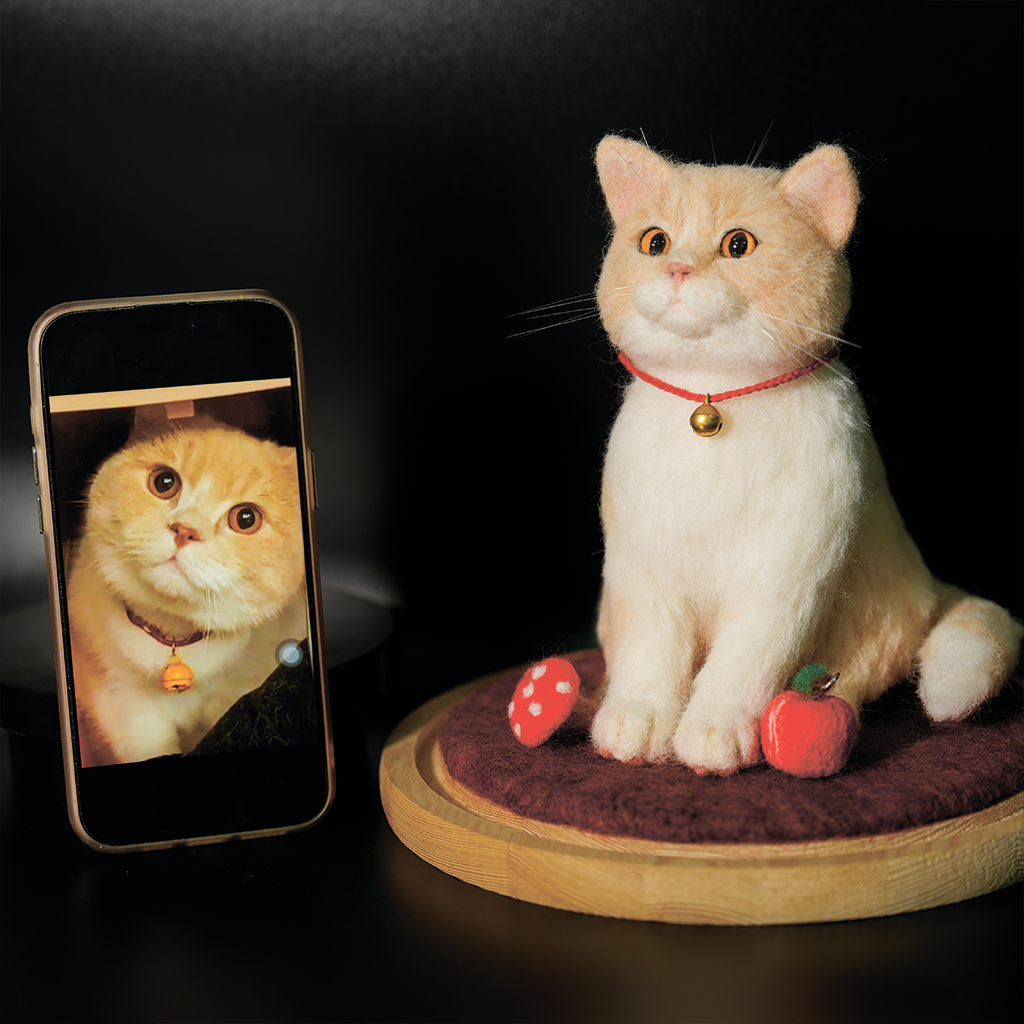about us
What is Wool Felt
Wool felt is a non-woven material made from wool fibers through processes such as needle punching, wet felting, or weaving. Its production leverages the characteristic of wool scales interlocking and matting under heat, moisture, or mechanical force to form a dense and sturdy fabric. With a history dating back to 6500 BC, wool felt is widely used in crafts, fashion accessories, industrial materials, and artistic creations, known for its thermal insulation, shock absorption, and malleability.
What is a Wool Felt Pet
- 1.Highly Customizable: Owners can commission unique pieces based on photos of their pets, resulting in highly accurate replicas for keepsakes or decoration.
- 2.Artistic and Memorial Value: It is not just a craft but an emotional work of art. Many people use them to memorialize a departed pet or to capture a cute moment of their current pet in a permanent form.
- 3. entirely Handmade: The process relies entirely on handwork, using specialized barbed needles to repeatedly stab and poke the wool, causing the fibers to mat and firm up into shape. It is time-consuming and requires expert skill.
- 4.Safety: Usually made from natural wool and professional dyes, the finished product is safe and non-toxic (though it is a decorative item, not a child's toy).
What is AI
- 1.Automatic Speech Recognition (ASR)•Function: Converts human speech signals into corresponding text. Essentially, it's "dictation."•Example: Voice typing on a mobile phone, a smart speaker receiving your commands, real-time transcription for meetings.
- 2.Natural Language Processing (NLP)•Function: Understands and processes the converted text, analyzing the user's intent, sentiment, and context. This is the core technology that allows AI to "understand" the meaning behind human speech.•Example: When you ask a smart speaker "What's the weather like?", it understands that you want a weather query, rather than just repeating the sentence.
- 3.Text-to-Speech (TTS)•Function: Converts text into natural, fluent speech output. This is what makes machines "talk."•Example: Voice guidance in map navigation, audiobooks, voice responses from intelligent customer service. Modern technology can generate highly realistic and emotionally rich voices that are almost indistinguishable from humans.
- Choosing a selection results in a full page refresh.



